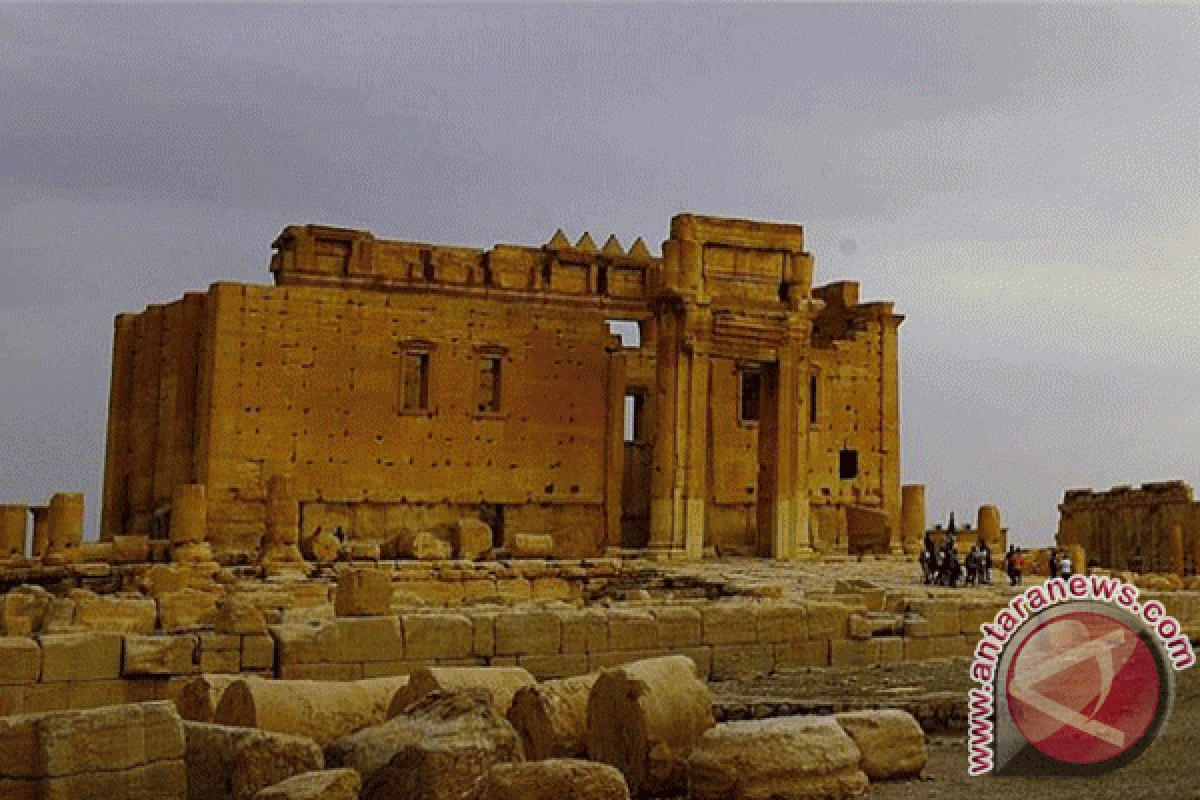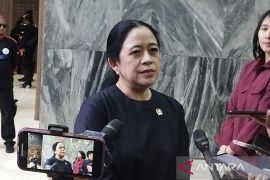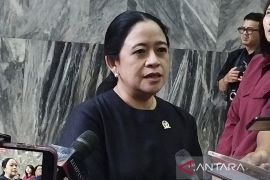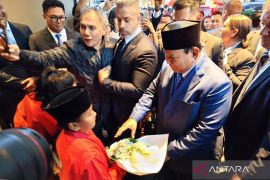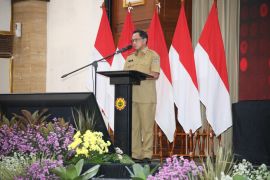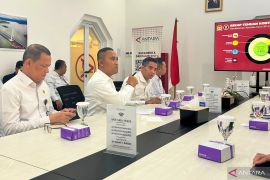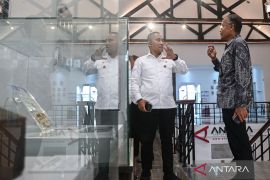In March this year, Syrian forces recaptured Palmyra from ISIS, months after the city fell to the Islamic extremist group. Military barracks, a number of tanks and combat vehicles could be found around the city.Jakarta (ANTARA News) - Palmyra, also known as Tadmur in Arabic, is one of the famous historical attractions in Syria. It is surrounded by the dry Syrian desert and located 215 kilometers from Damascus.
The territory, which is part of the Homs province, had two areas, namely, the ancient and modern cities.
The ancient city of Palmyra had been declared a world heritage site by the United Nations Educational, Scientific and Cultural Organization (UNESCO).
The oft-quoted charm of the town prompted ANTARA to visit Homs, which had a population of 65 thousand before the conflict.
In the midst of the ongoing conflict, we had to pass more than 20 checkpoints to reach Palmyra. Six Syrian soldiers were posted at the checkpoints, who were always on alert.
After traveling for five hours from Damascus, we arrived at the city.
On May 20, 2015, ISIS captured the historic desert city of Palmyra. During their rule, ISIS destroyed many of Palmyras relics and displaced its residents.
In March this year, Syrian forces recaptured Palmyra from ISIS, months after the city fell to the Islamic extremist group.
Military barracks, a number of tanks and combat vehicles could be found around the city.
Buildings that have been smashed to pieces by artillery fire and bombing runs provided evidence of the fierce battle that took place between ISIS and the Syrian soldiers.
It seems nothing more than a ghost town with little to no movement in the streets or buildings below.
The roofs are covered in rubble or have been blown off while the streets are littered with debris.
The mines planted formerly and craters left by bombs were visible on the streets.
Meanwhile, the Syrian government has successfully completed clearing the ancient Syrian city of Palmyra of explosives left behind by ISIS.
Nearly 8,500 landmines had been planted deep around the city.
"With the help of the Russian government, we have cleared over 8,500 mines in Palmyra," one of supervisors of Palmyra city, Major Samir Eskeef said when we visited his office.
Samir remarked that the government was focused on rebuilding Palmyra and securing the town from ISISs assault.
He added that the Syrian troops had also uncovered a mass grave, with at least 40 corpses of men, women and children.
"Some were beheaded, others brutally tortured. After capturing Palmyra in May last year, ISIS terrorists had massacred around 400 mostly women, children and elderly victims," he said.
In the town center's square, there was an iron cage coated wire and a pilling on its side. The cage was equipped by ISIS flag featuring the shahada.
Hayati, a staff of Ministry of Information in Syria stated that ISIS had also imprisoned some residents to be executed. Some of them were brutally tortured.
"They were beheaded and their heads stuck to the top of the pillar. You can imagine the brutality of ISIS," Hayati noted with a trembling voice.
Hayati further said the headless bodies were hanged in the iron cage.
"ISIS also displayed the executed bodies for three days to warn the people," she said.
In a damaged restaurant, there were dome-shaped cages where ISIS had tortured residents brutally.
"The people of the city had fled to several locations around Palmyra, mostly to the city of Homs," she said.
Meanwhile, Syrias Director-General of Antiquities and Museums, Abdul Karim Makmun said the government had secured the ancient statues and sculptures from Palmyra before ISIS invaded of Syrias most famous archaeological treasures.
Abdul and his team had managed to save about 4,000 statues and sculptures.
If these objects had fallen into the hands of ISIS, they would have destroyed them.
He further said that dozens of Roman statues had been retrieved from Lebanon after being looted from Palmyra.
"The government of Lebanon has thwarted the smuggling of artifacts from Syria. The Lebanese government has contacted Syrian authorities to rescue the artifacts," he affirmed.
When the countrys civil war surpassed Damascus in recent years, Abdul ordered the evacuation of every artifact from the National Museum.
"Before the crisis, we bring the national museum collections to secret locations. As a result, almost 99 percent of the collection is safe," he remarked.
From Deir Ezzor, the government has evacuated about 35,000 artifacts.
"We also saved thousands of vases from the Syrian Mesopotamian sites, which date back to 2,000 BC," he stated.
With regards to the restoration of Palmyra, he noted, that it required $10 to 15 million.
"Physically, 80 percent of Palmyra is good. The condition gives us hope for restoring Palmyra. We will discuss with the international committee about the restoration," he said.
He further stated that a university professor and the former General Manager for Antiquities and Museums in Palmyra, Kalid al-Asaad, had been beheaded in Palmyras public square.
"The militants watched the assassination. I condemn the murder," he emphasized.
Earlier, the Professor and Head of Department of the Fiqh and Usul Fiqh Damascus University in Syria remarked that the western media had created an image of a sectarian conflict between the Sunnis and Shiites.
"The western media has spread slander about Syria instead of reporting the truth. The reality is that there is no sectarian conflict between the Sunnis and Shiites. The media has exploited and played the sectarian card to destroy Syria. Al-Jazeera and TV Arabiya, both television stations respectively owned by Qatar and Saudi Arabia, had succeeded in building a narrative of hate between Sunnis and Shiites," the son of a prominent Sunni cleric in Syria, the late Sheikh Ramadhan al-Buthi, stated.
"The news broadcast by Al-Jazeera was not balanced. At that time, I was teaching at the University of Damascus. When I got home, my son asked me about what was happening on the campus. My son said there was a huge rally. I responded that there had been a small protest rally involving some 35 students. However, the total number of students has reached 30 thousand," he revealed.
The news also distorted the facts that came as a shock to the professor.
"There was no sectarian conflict in Syria. Last year, Jordan had sent a messenger. The representatives observed the conditions in Syria. They found no sectarian conflict between the Sunnis and Shiites," he affirmed.
In the area of the old city of Damascus, he noted, a community of Orthodox Christians, Sunnis, Shiites, and Jews had lived in harmony for thousands of years. They were able to conduct their religious activities in peace and tranquility.
"We found a group of people who had fired mortars at a Sunni area, and the same group also launched mortar shells on a Shiite area. They want to provoke the people of Syria," he pointed out.(*)
Reporter: Azis Kurmala
Editor: Heru Purwanto
Copyright © ANTARA 2016
